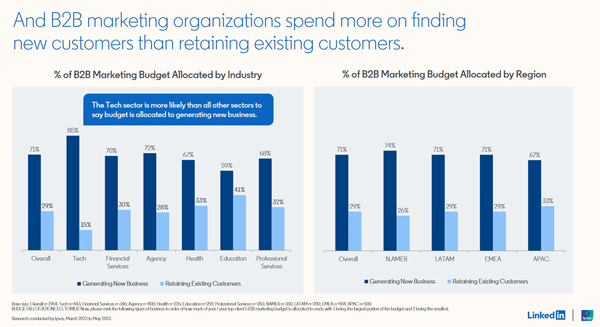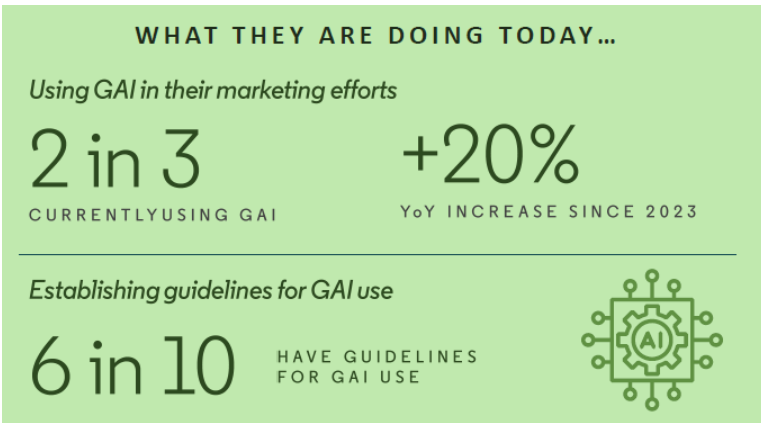What B2B Marketers Need to Know from LinkedIn’s New Benchmark Report
By Nick Nelson
It is one of my great privileges as a B2B marketer to be able to collaborate with the brilliant minds at LinkedIn Marketing Solutions, who’ve been clients of TopRank Marketing for many years.
As an online professional network with a membership nearly one billion strong, LinkedIn is purpose-built for developing careers, talking shop, and doing business. As such, it’s an ideal environment for discovering and engaging with valuable B2B audiences – a selling point that’s grown central to the messaging for LinkedIn’s ads business: The Place to B2B.
In an ambitious effort to fulfill this mission, LinkedIn recently partnered with Ipsos to produce the B2B Marketing Benchmark report, which surveyed nearly 2,000 global B2B leaders to explore the state of the discipline here in 2023.
Expected to be the first in an annual flagship series of research, the B2B Marketing Benchmark is filled with enlightening information and insight around budgets, organizational dynamics, and evolving strategies.
Here are four findings that struck me as most noteworthy as I dug through this expansive, in-depth report.
B2B Marketing Benchmark: 4 Key Insights
#1: B2B marketing budgets are rising amid economic uncertainty
The economic outlook from CEOs may remain tepid as we wade into the summer months, but LinkedIn’s report found that across various regions, B2B leaders are expecting increases in budgets and spending:
- 6 in 10 respondents in the survey said budgets increased in the past year
- More than 2 in 3 say budgets will increase in the next year
Conspicuously bucking the upward trend is the highly-competitive tech sector, which had the highest rate of budget decrease (26%) of any covered. This creates an interesting opportunity for ambitious tech companies to gain an edge – LinkedIn’s B2B Institute has previously studied the outsized value of investing during a recession while others dial back.
In terms of where budgets are being allocated, lead generation owns the biggest share at 36%, but at 30%, brand building and awareness is not far behind.
#2: CMOs are gaining more influence (and accountability)
The evolving role of marketing leadership in the C-suite reflects the evolving role of marketing in the B2B organization. With increased budgets comes increased responsibility.
LinkedIn’s report found that roughly two out of three CMOs and CFOs believe the importance of the CMO role has increased, with these biggest changes being observed:
- Expected to be able to demonstrate marketing impact to bottom line
- More direct role in driving revenue and growth
- Under more pressure to prove ROI in less time
In the face of these pressures, B2B leaders generally express confidence and optimism about marketing’s ability to drive revenue in the year ahead, with 86% of respondents sharing a positive outlook. Notably, CFOs in the survey were more likely to say they are optimistic (60%) than CMOs (49%).
#3: In-person events are the most popular, and effective, B2B marketing channel
This feels like one of the banner headlines to come out of the B2B Marketing Benchmark report: in-person events are back in a big way. Respondents named them …read more
Source:: Top Rank Blog









